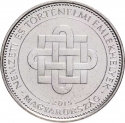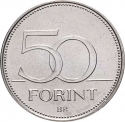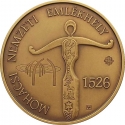You are about to finish your registration. Please check your mailbox (including spam folder). There should be a letter with a confirmation link. Check setting to make sure that your e-mail address is correct.
Send letter againDescription
Hungarian historical landmarks hold profound significance as sites of memory, revered for their national, religious, regional, or minority importance. While they often boast remarkable architectural features, their primary value lies in their historical significance. According to legislation, a national memorial site can encompass either a constructed setting or a natural locale where a pivotal event from the past, shaping the nation's trajectory, or a significant state decision has unfolded, deemed worthy of national remembrance.
Distinguished national memorial sites serve as crucial touchstones in both Hungarian history and the history of the Hungarian State. They offer visitors a window into the pivotal events, tragedies, and triumphs that have shaped Hungary's past. Presently (as of 2024), the country boasts sixty-four recognized historical landmarks, designated as such by government decree following recommendations from the National Memorial and Mourning Committee. The National Heritage Institute ensures their consistent identification, erecting markers that not only uniformly distinguish the landmarks but also succinctly convey their significance to interested parties.
Engraver: Zoltán Tóth
Obverse

|
Depicts the tower of the Reformed Great Church, with a detail of the building of the Debrecen Reformed College in the background. Above the depiction of the College building, the emblem of national memorials is visible, with the inscription "NATIONAL" above and "MEMORIAL SITE" below in two horizontal lines. Around the edge, the inscription "GREAT REFORMED CHURCH AND COLLEGE" is curved at the top, while "DEBRECEN" is at the bottom. These inscriptions are separated by a dot on the left and the engraver's privy mark on the right. REFORMÁTUS NAGYTEMPLOM ÉS KOLLÉGIUM |
|---|---|
Reverse

|
Depicts the vault keystone of St. Andrew's Church, which once stood on the site of the Great Reformed Church in the Middle Ages, featuring a lamb with a flag. This lamb with the flag is a significant symbol of the memorial site, also appearing in the city's coat of arms as a Reformed symbol. The capstone depicted on the front page is preserved by the Reformed College Museum in Debrecen. MAGYARORSZÁG |
| Edge |
2000 Forint
Hungarian National Memorial Sites
Reformed Great Church and Debrecen Reformed College
Subscribe series
Adamo# EM411
Hungarian National Memorial Sites
Reformed Great Church and Debrecen Reformed College
Characteristics
| Type | Commemorative Issue (Non-circulating) |
| Material | Bronze Plated Copper |
| Weight | 18.4 g |
| Diameter | 37 mm |
| Thickness | 2.7 mm |
| Shape |
|
| Alignment | Medal |
| Mint |
Budapest Mint (BP)
|







